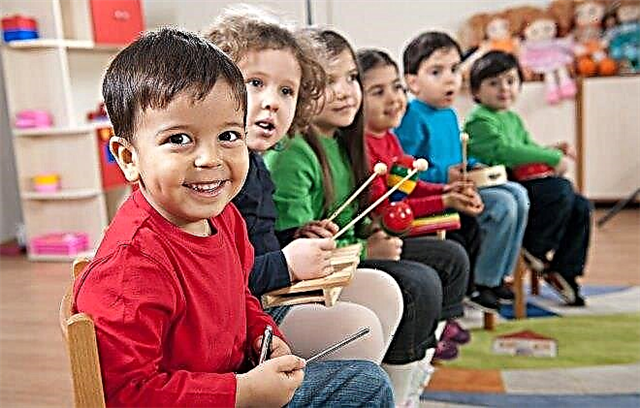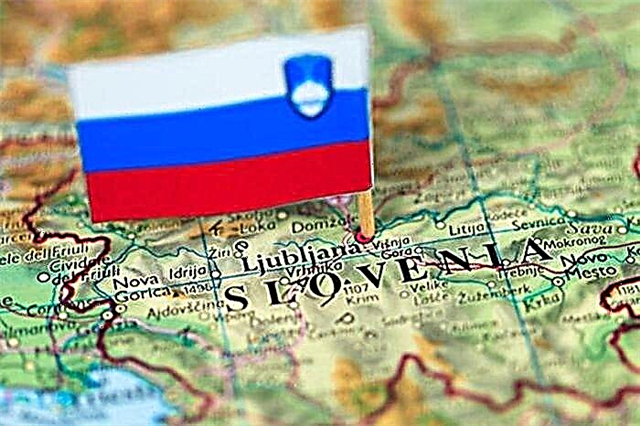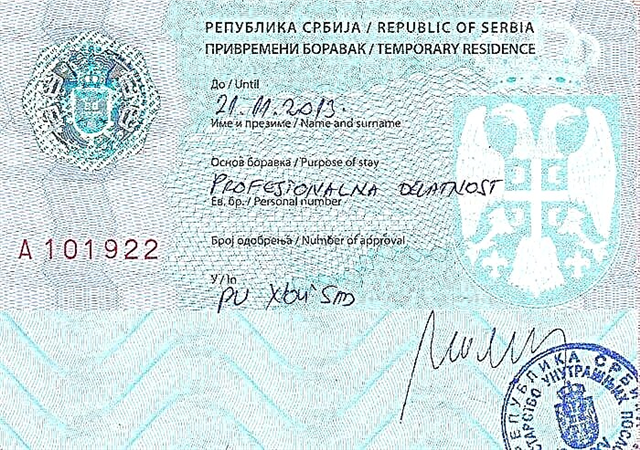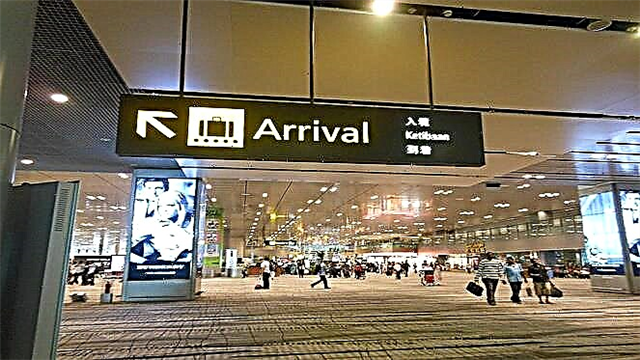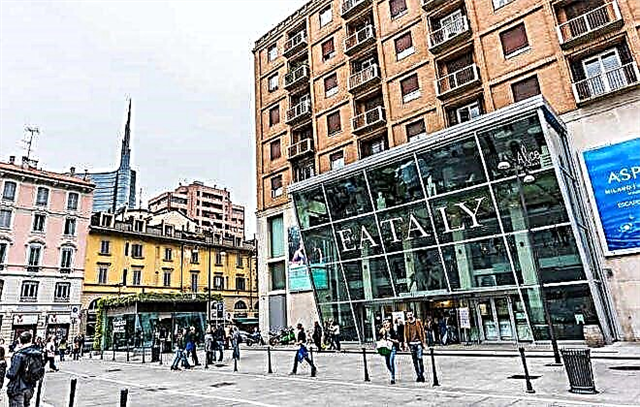The Italian vacation leaves no one indifferent. Having experienced a special way of life, having joined the local cuisine and imbued with the beauty of the landscapes, some begin to plan a new trip, others are thinking about moving. It is important for the latter to remember that life in Italy is not an endless siesta, that there are problems and crises here, and in order to settle in a new place, they will have to face many bureaucratic difficulties and inconveniences that result from the status of an emigrant.

State economy
The economy of the Italian Republic is one of the most stable in Europe and is approximately on par with Spain and France. Key areas of activity:
- growing wheat, rice, vegetables, fruits, flowers, olives;
- winemaking;
- the automotive industry (hence the origin of the cars Fiat, Alfa Romeo, Maserati, Ferrari);
- tourism.
Such areas as gold processing, electronic and machine-tool industries, and cotton growing deserve special attention.
The economy in Italy does not differ in the uniformity of development throughout the territory of the state. The northern regions are developed industrially and are distinguished by higher productivity indicators. The southern ones are engaged in the agrarian sphere, which most often does not withstand competition in the foreign market.
At the same time, according to the World Bank, the country ranks 8th in the world in terms of GDP - just over two trillion US dollars (forecast for 2021) with the prospect of an increase in this indicator by 1.3% in 2021.
After the global crisis of 2008-2009, Italy is still at the mercy of such phenomena as high tax rates, stagnation in labor productivity, and large public debt.
The standard of living of Italians
The standard of living in Italy, in comparison, for example, with Germany, Austria or Switzerland, can be called satisfactory. The reasons include not only a significant financial debt to the European Union, but also the imperfection of the banking system, the impending threat of default.
All these factors contribute to the growth of social inequality in the state and an increasingly tangible division between the poor and the rich.
Wages and Employment Opportunities
The total income of the average Italian family is 22 thousand euros per year (tax deducted and provided that both spouses work). The average salary level ranges from 1300-2500 euros per month.
The cost of living in Italy for 2021 is 855 euros. The income of Italians varies depending on the region of residence:
- Venice - about 2,500 euros;
- Trento - 1,950 euros;
- Milan - 1,850 euros;
- Verona - 1,315 euros.
Most of all are received by doctors, financial workers, insurers, government employees, programmers, translators from oriental languages, logistics and transportation managers, engineers, and builders. For example, customs officers receive about 50 thousand euros per year.
 Work in Italy for foreigners without a specialty is possible in the field of tourism, services or in the agricultural sector. It should be remembered that workers from abroad are subject to quotas, which are reviewed by the government once or twice a year based on the needs of the economy. It is for this reason that those who have already managed to legalize their status in Italy and live in the northern regions of the country are increasingly sent to work in neighboring Switzerland.
Work in Italy for foreigners without a specialty is possible in the field of tourism, services or in the agricultural sector. It should be remembered that workers from abroad are subject to quotas, which are reviewed by the government once or twice a year based on the needs of the economy. It is for this reason that those who have already managed to legalize their status in Italy and live in the northern regions of the country are increasingly sent to work in neighboring Switzerland.
But the choice of which city in Italy is better to live depends not only on the amount of wages. Where it is low, the price level for the main items of expenditure is also low.
Social protection of the population
Socially unprotected segments of the population are under the tutelage of the state. These include:
- unemployed;
- pensioners;
- large families;
- minor children who are left without parents;
- disabled people.
Assistance to those who have lost their jobs is provided on the basis of the Legge di Stabilita jn 2021 law, which provides for the payment of a combined allowance. When calculating it, the reason for the dismissal, the number of contributions over the last 4 years, is taken into account.
In 2021, those who quit on their own do not receive unemployment benefits. The rest can count on assistance for a period of 78 months, provided that they have worked for the last 4 years. In this case, the amount paid should not exceed 1300 euros per month.
The amount of the disability benefit is one third of the earnings.
Medical service
Italians are an aging nation. Comfortable living conditions and state care contribute to an increase in the number of elderly people. Thanks to the favorable climate and high-quality medicine, the average life expectancy in Italy today is higher than in other European countries - about 83 years.
Services for some categories of citizens in local hospitals are free. These include:
- children under 6 years old;
- elderly people over 65;
- unemployed;
- low-income;
- pregnant women;
- severe patients.
If you have registration, you can undergo a medical examination, take tests, get most of the medicines and even sign up for some types of surgery for free. Visits to some narrow-profile doctors (for example, dentists) and complex diagnostics are paid for.
In emergencies, Italians prefer to go to private clinics, which guarantees a higher quality of service. But they rely on government hospitals for routine observation by a general practitioner.
For working citizens, medical services are covered by insurance policies. Foreigners can also purchase insurance or visit private doctors.
Italian medicine is renowned for its good results in the prevention of cancer and the treatment of the elderly.
Education
The education system in Italy has a standard structure:
- Primary School;
- middle school level;
- higher education.
The network of preschool institutions in the country is very poorly developed. Kindergartens are divided into private and public. A visit is most often possible only in the morning. Staying in the municipal garden is free, but you have to pay for food (an average of 5 euros per day).
To study in public schools, the child must have Italian citizenship. Immigrants can only be enrolled in private.
 They study in Italy for free, but it is supposed to make annual fees - about 500-4000 euros. The cost of training in a private educational institution depends on the program and status of the university or school and ranges from 5-25 thousand euros per year.
They study in Italy for free, but it is supposed to make annual fees - about 500-4000 euros. The cost of training in a private educational institution depends on the program and status of the university or school and ranges from 5-25 thousand euros per year.
The admission requirements for foreigners are higher than for native Italians. To be admitted to the university, you must provide a school certificate, a diploma of two courses at the university in your country and a certificate of passing the Italian language exam. The most gifted students can win a scholarship from a university or municipality.
Crime level
As of 2021, about 7,500 crimes were recorded in the country every day. Moreover, the leaders in this rating were computer fraud, extortion and money laundering. But the theft of bags and break-ins, although they have ceased to occupy the top positions in police reports, still take place due to the difficult situation with migrants.
The ranking of the most dangerous cities according to the police for 2021 looks like this (in descending order):
- Milan,
- Rimini,
- Bologna,
- Turin,
- Prato,
- Florence,
- Genoa,
- Rome,
- Pisa.
The situation in Naples still remains dangerous in terms of street robberies. But this is the only type of crime for which the city is famous.
A list of cities where people's lives and property are not endangered: Oristano (Sardinia), Pordenone, Rieti, Sondrio, Enna (Sicily), Benevento, Matera and Treviso.
Climate and weather conditions
In different parts of the country, the climate and weather at different times of the year can vary significantly. Therefore, on this basis, it is impossible to name the best place to live in Italy, because everyone chooses suitable conditions for themselves.
- In the north, a temperate continental climate prevails. It is characterized by cool winters, humid and hot summers. The off-season is characterized by a large number of rainy days.
- In the south, the climate is Mediterranean: rainy and warm winters, hot and dry summers.
- It is most comfortable in the central part of the state, where all indicators can be described as moderate regardless of the season.
The country is washed by 4 seas: Ionian, Tyrrhenian, Adriatic, Ligurian. The coast is different everywhere - from rocky reliefs to sandy beach areas. Mountains occupy three quarters of the state.
As for the ecology, do not forget that the north of the country is an industrial zone, where hazardous emissions from enterprises into rivers and the atmosphere are frequent. At the same time, Italy signed the Kyoto Protocol, which indicates the adoption of measures to limit actions aimed at environmental pollution, and the development of various environmental programs.
The order of prices for the main items of expenditure
The cost of living in Italy is made up of several components:
- payment for housing;
- utilities;
- Food;
- communications and transport;
- clothes;
- leisure.
It is not customary to live with ostentatious luxury in this country, but Italians are very fond of delicious food and good rest. But the prices for certain services may differ not only depending on the region, but even from the area of the city.
Housing and utilities
Most of the country's residents live in rented apartments and houses. Rental fees in the northern part of the state range from 600 to 1000 euros. Closer to the south, prices decline slightly.
Not everyone can afford to buy their own real estate. The highest prices are recorded in Milan and Rome. Here one square meter can cost 5-9 thousand euros, in the periphery you can buy housing at a price of 3-4 thousand euros per square meter. m.
An additional budget will have to be planned for paying for utilities (prices are for the year):
- heating, hot water - about 800 euros;
- electricity - 400 euros;
- cold water - 120 euros;
- garbage removal and cleaning of the local area - 120 euros.
Additionally, Italians pay a fee for the presence of electronic devices in the house (TV, radio) - about 110 euros per year. The Internet will require about 25-30 euros per month, and a minute of mobile communication costs 0.17 euros.
On average, about a quarter of the annual income is spent on paying all utility bills. It is for this reason that Italians tend to skimp on their comfort. For example, in winter it is easier for them to put on more warm clothes than to add heating.
Food basket
 Food prices in Italy also vary by region. Everything is cheaper in the south than in the center or in the north. The most common items that are necessary for daily nutrition are best bought in the markets or in small budget stores.
Food prices in Italy also vary by region. Everything is cheaper in the south than in the center or in the north. The most common items that are necessary for daily nutrition are best bought in the markets or in small budget stores.
The most expensive are cheeses and seafood. For example, hard cheeses will cost 10-15 euros per 1 kg, but goat's milk cheeses will cost 6-8 euros per 1 kg. The prices for the main products are given in the table:
| Name | Price per liter or kg in EUR |
|---|---|
| Milk | 1.16 |
| Chicken fillet | 8.13 |
| Fruits vegetables | 0,5–2,80 |
| Wine | 4,5-8 |
| Water | 0.4-1 (1.5 liters) |
| Sugar | 1.4 |
| Eggs | 2.3 |
| Bread | 1,5–2,3 |
You can have a snack in a cafe for 15-18 euros, a lunch in a restaurant will cost 25-32 euros, the cheapest thing to eat in a fast food is 7.50-9 euros.
Public transport fares
Italians lead a leisurely lifestyle. They are in no hurry and prefer to walk. If the need for a car arises, preference is given to a compact and inexpensive runabout.
Every family, especially those living in a house or in a villa, has bicycles, because car maintenance costs a lot of money:
- insurance - 600 euros;
- technical inspection - 70 euros;
- gasoline - 1.51 euros.
Public transport in Italy is well developed only in large cities. For example, Rome has metro, city buses and trams. The price of a ticket for the Leonardo train, which takes you from Fiumicino airport to the city center, costs 14 euros per passenger.
There are several bus routes in small towns. A single trip can cost 1.5–2 euros, a travel pass for 1 week - 24 euros.
You can use a taxi service. If the settlement is very small, you will need to pay no more than 10 euros for one trip to any end of it.
Local traditions and mentality
Italians consider themselves a unique nation and do not hide it. The main value here is the family. And although the number of children usually does not exceed 2-3, all relatives, from grandparents to grand-nephews, gather here for family dinners.
Another feature of the local mentality is a certain "fixation" on oneself. Local residents pay a lot of attention to their own concerns and their lives, satisfaction of personal needs, getting pleasure from what they do.
Italians have a sense of beauty at the genetic level, which is often reflected in art. But even in everyday life, they are very sensitive to beauty. This is manifested in the design of the premises, in the appearance.
You can recognize a native of the country by its elegance and sophistication. In the south, they like accessories very much, in the north they prefer the classic style.
Italians also love to talk. Moreover, having got to an Italian lunch, be prepared for the fact that everyone will speak at the same time. And this is not a manifestation of disrespect, but rather unrestrained emotionality.
Italians have a very even attitude towards foreigners. They perceive them as guests: we are glad that you stopped by, but do not forget that you will soon be returning to your homeland.
The main thing for the locals is that the newcomers behave modestly, respectably, do not break the law and respect their way of life. This will manifest itself in everything from adherence to the rules for sorting garbage, to behavior in a restaurant.
Russian diaspora in Italy

The overwhelming majority of Russian migrants are women. These are either those who married Italians, or those who moved to the republic on the basis of labor migration and work for wealthy Italian families as housekeepers and nurses.
Russian communities can be found in many cities. Their task is to help newcomers adapt to the country. For example, the community of the Russian-speaking population in Turin provides all kinds of support in the process of interaction with the authorities. And the oldest education is the Russian community in Milan, which has existed since 1979.
Russians in Italy prefer to settle where it is easiest to find a job and where housing is cheaper:
- Milan;
- Bolzano;
- Florence;
- Trento;
- Turin;
- Sondrio.
The number of Russian migrants in Italian territory today reaches 135 thousand people.
How pensioners live in Italy
The country provides for various types of payments for pensioners: seniority, old age, poverty and others. The amount of security depends on what contributions the person made during his labor activity to the state fund. The minimum length of service for women is 41 years 10 months, for men - 42 years 10 months.
The retirement age is 66 years 7 months regardless of gender (from 2021 it is planned to raise the qualification to 67 years).If a person quit before the age of 60, penalties are applied to him - the amount of payment is reduced by 2%.
Foreign citizens can also count on pension benefits, but only if they have made contributions to the treasury within the last 10 years.
The life of retirees in Italy is not poor. The state takes care of the elderly in every possible way, constantly developing new programs. But the task before them is not an easy one, because there are 3 pensioners for one working citizen.
Retired foreigners choose Sardinia and Tuscany for moving. There are favorable weather conditions, beautiful nature, and prices for food and other needs are lower than in other Italian regions.
Where is better to settle
The choice of a place of residence is an individual decision of each migrant. It is impossible to say unequivocally where it is better to live in Italy. A study conducted a couple of years ago by Sole 24 Ore found that the cities with the highest status are located closer to the north of the state.
The assessment was based on criteria such as job availability, standard of living, quality of utilities, cultural events and support from the municipality. The city ranking looks like this:
- Bolzano - took the highest point in all respects.
- Milan has been in this position for a long time.
- Trento - has an important advantage - a developed transport infrastructure.
- Sondrio and Florence have been competing with each other for several years.
Other best cities in Italy to stay: Venice, Cuneo, Aosta, Ravenna, Siena.
Among the outsiders were Palermo, Caserta, Reggio di Calabria.
For migrants who move for the purpose of employment, it is best to choose the cities in which there are more chances of finding a job - Rome, Milan.
Outcomes
To objectively assess how correct the decision to emigrate is, it is necessary to compare all the pros and cons of living in Italy:
| Advantages | disadvantages |
|---|---|
| high level of economy; | lower standard of living than in Western European countries; |
| balanced ratio of wages and prices; | lack of jobs; |
| the ability to travel throughout Europe without a visa; | expensive real estate and high costs for it; |
| privileges in obtaining a visa permit for many countries, for example, the USA, Canada; | the need to study the Italian language and its many dialects; |
| the proximity of the seas, beautiful nature; | the specific mentality and cultural characteristics of the Italian nation; |
| different climatic zones, which allows you to choose a region with any conditions; | low probability of earning a pension in Italy with a high age limit; |
| high level of medicine; | the need to confirm your diploma; |
| quality food; | availability of quotas for the recruitment of foreigners. |
| accessibility of the world of fashion; | |
| unhurried lifestyle; | |
| equal treatment of foreigners. |


